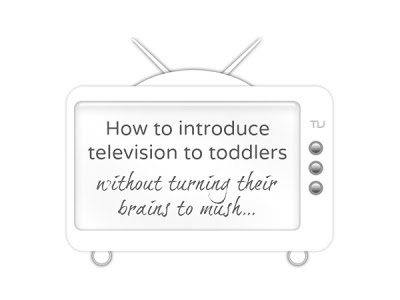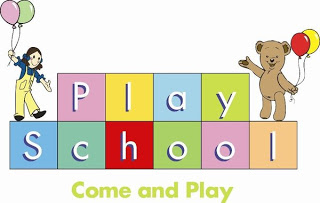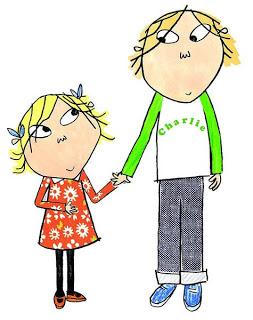
(Image source)
So having decided when to introduce television, the next question is which shows are best?
There seemed to be a lot of what I consider “bad” first TV shows:
- Goodies vs Baddies – there are lots of these sorts of TV shows aimed at preschoolers that seem just darn right scary for young toddlers – I’m talking the superhero variety.
- Overcoming all odds – these shows showed something going wrong, like a lorry’s brakes failing, and everyone working together to overcome this problem. Except that after watching one or two of these type of shows, JJ became very scared. She didn’t want people to be in danger. She couldn’t understand that it was just a story.
- Bad behaviour which backfires with a lovely moral at the end – this sort of storyline seems innocent enough, until you realise that younger kids don’t necessarily understand the morals, and instead are watching and emulating the bad behaviour.
- A bunch of nameless shapeless characters saying loop loop de loop doop – kids seem to get entranced by these shows. There’s one that goes for half an hour. Seriously, half an hour of loop loop loop. I can’t help but think that this is a wasted learning opportunity, that this time could be better spent.
- Any show where the frame length is too short – this is the case with most modern day cartoons. It makes swish viewing to have many scenes and “camera angles”, but unfortunately young children can’t keep up.
We wanted shows that were more than just mere babysitters. We wanted shows that would be appropriate for a highly impressionable young toddler, that would educational, loving and fun, that would encourage her sense of adventure, that would be worth the time spent watching.
After a lot of research, previewing and discussing, here are the shows that we choose for our daughter’s first television experiences.
 |
1. Playschool
Now if you’ve ever watched Playschool you’ll know that they don’t have the budget to advertise. So no, this is not a sponsored post! Lol. I just really love this show. Approaching it’s 50th anniversary, this is a classic show that I fondly remember from my own childhood, although the reason that I recommend this as a first kids’ TV shows is not for nostalgia.
Almost the entire show is shot with the cameras in the same location, with very long frame lengths, sometimes minutes. This gives very young children a chance to see what’s going on for themselves. They can watch the entire scene in much the same way they would a live play. When they do change sets, the camera usually pans, and usually this is done from left to right – the way that you read a book.
The presenters are a mix of sex, race and age, and they all speak English with an Australian (or in the case of Jay, kiwi) accent. They spend most of the show talking directly to the camera, asking questions throughout, making it feel interactive. They sing a mix of traditional and newer nursery rhymes that have rhyme, alliteration, rhythm. They dance in a fun way, that encourages audience participation, using all parts of the body. Playschool also use a relatively small collection of dolls, teddy bears and other toys to tell the stories, much in the same way that a child would use the toys in their own home to role-play with. When they tell a story, whether from a book or in a role-play format, they skip over or retell sections that may be scary or encourage bad behaviour.
Playschool promotes a broad idea of what the normal family is. In addition to the presenters being from diverse backgrounds, they also show families that are rich and poor, that live in the city and the country, that have one parent or two, that live in a house or an apartment. They show short clips of real Australian families doing real things.
And the craft! The craft makes my heart sing. Playschool encourages affordable, often recycled materials, with lots of imagination and colour. Perfection is not the goal. They usually focus on process over product, and include lots of sensory play.
The only episode that I question is one where they introduce the concept of death. Whilst they cover the topic tactfully, personally I still don’t feel this is Playschool’s place. They don’t know the unique situation of each viewer.
The other episode where I think they are toeing the line, is one where Morris (one of the teddy bears) goes to a disco dressed in nothing but leather chaps and a leather cap. Probably something that can wait beyond toddler years. But I’ll let them off on that one. He does look adorable!
For our family, we didn’t allow any TV at all whilst our daughter JJ was a baby. We started letting JJ watch Playschool when she was one and a half years old, and this was the only show that she watched for the next eight months. She would ask to role-play the different presenters “Daddy, you Andrew. I Karen.” and she even named some of my shoes after presenters – some orange ones were Essie’s shoes and silver ones were Justine’s shoes. JJ was given a Jemima doll for her birthday which quickly became her prized possession. In fact, it still is her most cherished doll.
But eight months later, it was time to introduce another TV show, and after careful consideration we chose…
 |
| (Image Source) |
2. Guess How Much I Love You
Guess How Much I Love You is a thirty three part series of the adventures of the protagonist Little Nut Brown Hare, his father Big Nut Brown Hare, and his friends Little Field Mouse, Little Grey Squirrel, Little Redwood Fox, and so on.
One of the reasons why we chose this show as our second show is the illustrations. They are lovely, and still retains the feel of the original picture book, which we had read previously at home. But the main reason is the kind messages that prevail throughout this series. Messages of love, friendship, playfulness, innocence, consideration, bravery, kindness.
Big Nut Brown Hare is the parent that I want to be. He encourages without pushing. He helps without stifling. He is, for me, a perfect example of attachment parenting. Little Nut Brown Hare is so secure in his relationship with Big Nut Brown Hare, that he is able to go forth with confidence, exploring his world around him, forging wonderful caring friendships.
The only negative that I can see in this show is that it is somewhat unAustralian. The animals, the flora, the weather, are all things that my daughter will not get to experience in our home. But, having said that, she does still need to learn these things, and this has been a lovely medium.
And so, for the next four months, JJ watched a combination of Playschool and Guess How Much I Love You. JJ started to learn the episodes by rote, and the role-playing evolved to include this new shows characters and themes. One morning, when my eyes were refusing to open even though I had a little one trying to pull off the covers, she lent over me and whispered “Mummy, I love you the world” and with that small sentence my heart exploded. But, sooner or later (and in our case it was four months later), the time came to introduce show number three…
 |
| (Image Source) |
3. Charlie and Lola
If Big Nut Brown Hare is the parent that I want to be, then Charlie is the older sibling that I hope that JJ will become. And Lola, well Lola is the preschooler that I think JJ is already turning into. She is cheeky, funny, adventurous, mischievous, kind, unrestrained and occasionally self-centred.
We were first introduced to Charlie and Lola via Lauren Child’s books – which are wonderful. I believe that children view TV shows differently if they have seen the characters in books first. Go to your library and borrow a few.
There are seventy four shows in the series, and some of them deal with some complex issues that require the maturity of an older toddler. I’m glad that we waited until JJ was almost two and a half before introducing some of these concepts. Concepts such as death of a pet, superstitions, being left out, getting lost and being afraid of the dark. Charlie and Lola deal with these concepts really well, but I still don’t think I’d want my under two year old to be pondering these topics.
My main criticism of Charlie and Lola is Lola and Lotta’s grammar and pronunciation, which although adorable, is extremely very not correct Charlie at a time when my daughter is learning to speak.
When JJ was nearing three years old, she was showing enough maturity and desire to broaden her repoitoirre. We started including shows like Angelina Ballerina (both the original series, and the Next Steps series), Mike the Knight, Giggle & Hoot, Disney’s Cinderella (although we had to reassure her that the cat wouldn’t catch the mice for the first half dozen times or so times) and most recently, The Octonauts (which she’s become a tad obsessed about).
Our biggest challenge now is how to shield our youngest daughter Bee from television without denying JJ. At 9 months old, whenever Bee hears the television being turned on, she speed-crawls to the loungeroom, and pulls herself up to standing on the coffee table, with eyes glued. She would love to watch alongside her sister. But, I’m doing my best to prevent this. For now, we can distract Bee by playing with her in another area of the house. But I can see that this will be a bigger challenge as time goes on.
One idea that I have, is to shift JJ’s TV watching time to during Bee’s nap-time, but I haven’t yet implemented this. Question to all the second (or third, or fourth) time mums out there – how do you juggle it? Help!
xx
Danya
